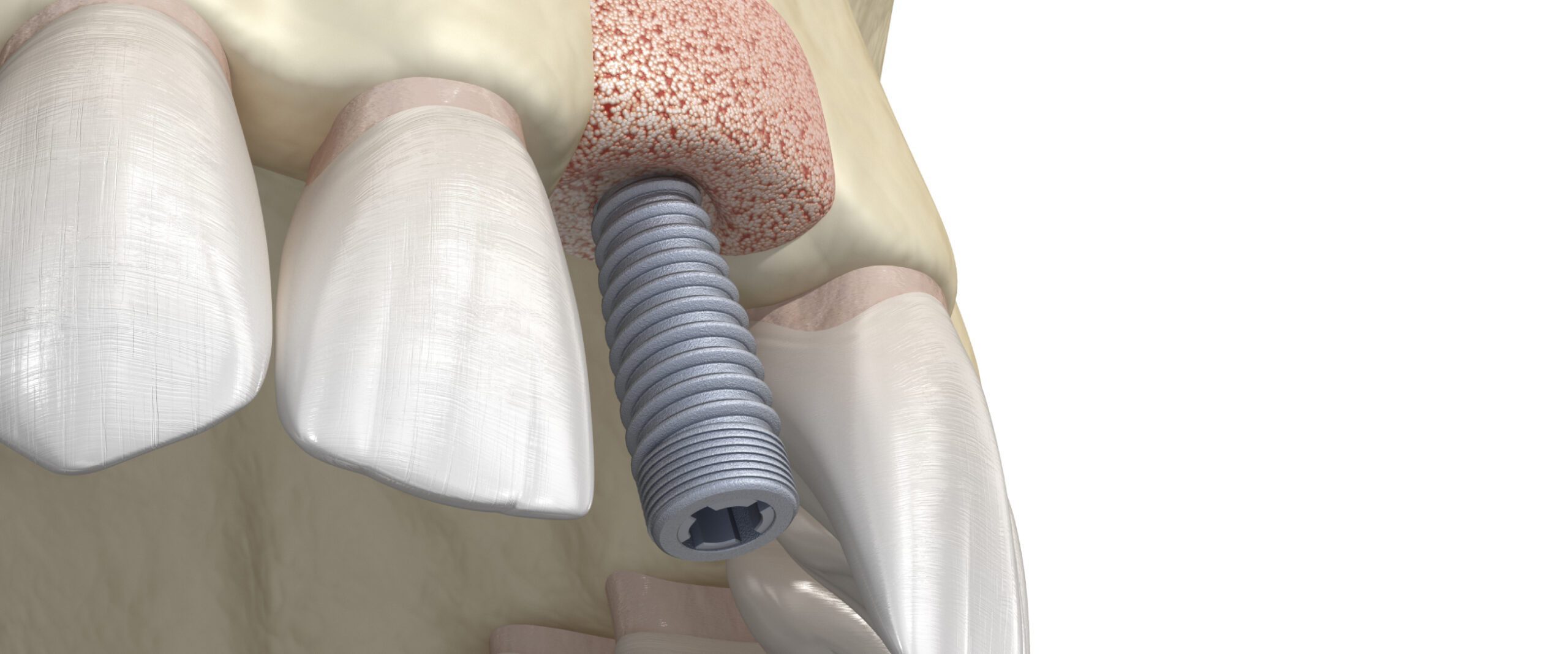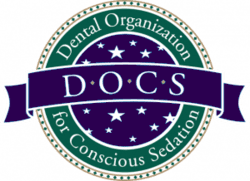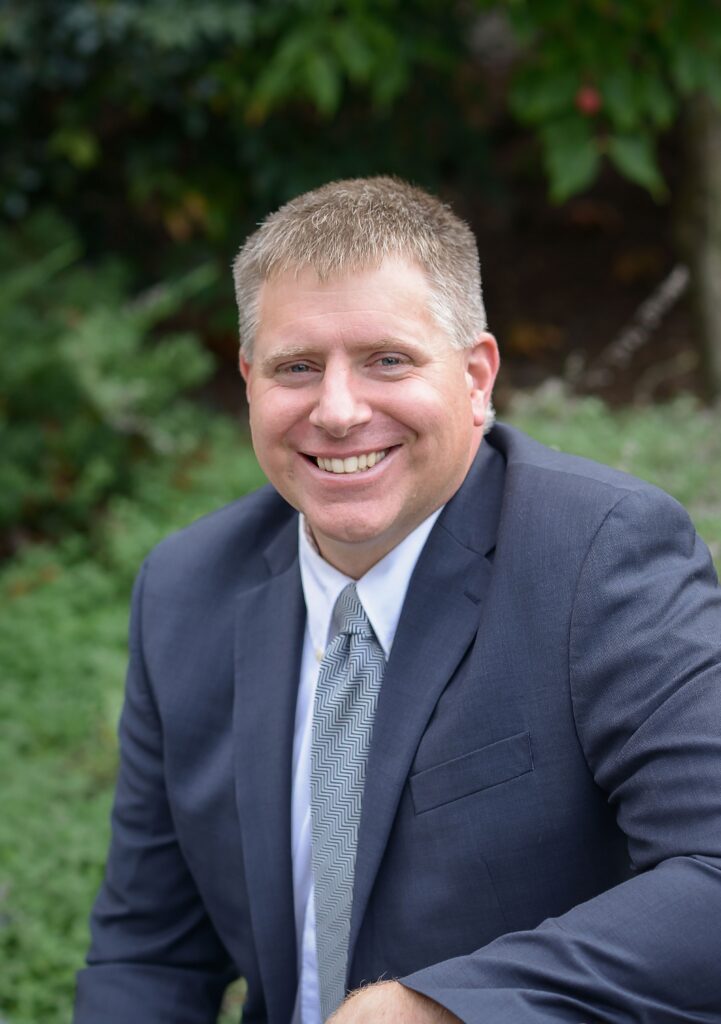
Create a Firm Foundation
for Implants with Bone Grafting
If you have lost significant jawbone tissue in the wake of missing teeth or severe periodontal disease, Drs. Joe McIntyre and Dan Whiting can perform a bone grafting procedure at their Bridgewater or Staunton, VA, practice to encourage new growth. In addition to rebuilding lost tissue, this surgery is also a reliable way to improve your candidacy for dental implants.
Our team at Smiles for Life offers a full gamut of dental services to lay the foundations for a healthier, happier smile. We are dedicated to providing comprehensive treatment in a pleasant, relaxing atmosphere.
How Bone Grafts Help
When tooth loss is left unaddressed, it can lead to jawbone degeneration and a myriad of other oral health problems, including:
- Shifting teeth
- Tooth loss
- Jaw pain
- TMJ disorder
- Structural changes to the face
- Inability to qualify for dental implants
Bone grafting is the most reliable solution to combat these problems. Using either donor tissue or tissue harvested from other parts of the body, dentists can place a graft directly into the jawbone. Over the following months, this graft then promotes bone growth.
In addition to improving implant candidacy, this procedure is also recommended for patients in the advanced stages of periodontal disease. Although periodontitis starts in the gums, an untreated infection can spread into the soft and hard tissues of your mouth and damage them irreparably. In such cases, bone grafts are often used in combination with gum surgery to rebuild your jawbone and prevent the disease from spreading further.
How Bone Grafts Help
When tooth loss is left unaddressed, it can lead to jawbone degeneration and a myriad of other oral health problems, including:
- Shifting teeth
- Tooth loss
- Jaw pain
- TMJ disorder
- Structural changes to the face
- Inability to qualify for dental implants
Bone grafting is the most reliable solution to combat these problems. Using either donor tissue or tissue harvested from other parts of the body, dentists can place a graft directly into the jawbone. Over the following months, this graft then promotes bone growth.
In addition to improving implant candidacy, this procedure is also recommended for patients in the advanced stages of periodontal disease. Although periodontitis starts in the gums, an untreated infection can spread into the soft and hard tissues of your mouth and damage them irreparably. In such cases, bone grafts are often used in combination with gum surgery to rebuild your jawbone and prevent the disease from spreading further.

Bone grafts can trigger new growth in the jaw and improve your candidacy for dental implants.
What to Expect during Bone Grafting
Before the procedure begins, one of our doctors will administer a local anesthetic and sedation to ensure that you are comfortable throughout the procedure. Then they can make an incision into the gums. After carefully folding back the layers of gum tissue, your dentist can insert the grafting tissue on top your jawbone. Once the graft is carefully secured, they can close the incision with sutures. Depending on the patient, we may even be able to place a bone graft and dental implant simultaneously.
Recovery and Results
At the end of your appointment, your doctor will provide you with a list of at-home instructions to lay the groundwork for a smooth recovery. These usually include medications to take, foods to avoid, details about caring for the surgical site, and information about follow-up appointments. Following these instructions is essential to preventing complications.
What to Expect during Bone Grafting
Before the procedure begins, one of our doctors will administer a local anesthetic and sedation to ensure that you are comfortable throughout the procedure. Then they can make an incision into the gums. After carefully folding back the layers of gum tissue, your dentist can insert the grafting tissue on top your jawbone. Once the graft is carefully secured, they can close the incision with sutures. Depending on the patient, we may even be able to place a bone graft and dental implant simultaneously.
Recovery and Results
At the end of your appointment, your doctor will provide you with a list of at-home instructions to lay the groundwork for a smooth recovery. These usually include medications to take, foods to avoid, details about caring for the surgical site, and information about follow-up appointments. Following these instructions is essential to preventing complications.
Bone grafting is a powerful tool used to rebuild lost jawbone tissue and overall health.
It is not uncommon to experience some soreness and swelling during the first few weeks after dental implant surgery. Taking anti-inflammatories and applying an ice pack to the outer jaw can help minimize this discomfort. Over the next four to nine months, your doctor will monitor your recovery to ensure the graft is integrating successfully with the surrounding tissue. If the doctor did not place the implants with the bone graft, he can proceed to this step once the bone graft has fully fused with the jaw.
Lay the Groundwork for Your Oral Health
Bone grafting is a powerful tool used to rebuild lost jawbone tissue and overall health. Contact our office online or by calling (540) 828-2312 to schedule a consultation with Dr. McIntyre or Whiting. We serve patients from throughout the Waynesboro, Harrisonburg, Staunton, and Bridgewater areas.
It is not uncommon to experience some soreness and swelling during the first few weeks after dental implant surgery. Taking anti-inflammatories and applying an ice pack to the outer jaw can help minimize this discomfort. Over the next four to nine months, your doctor will monitor your recovery to ensure the graft is integrating successfully with the surrounding tissue. If the doctor did not place the implants with the bone graft, he can proceed to this step once the bone graft has fully fused with the jaw.
Lay the Groundwork for Your Oral Health
Bone grafting is a powerful tool used to rebuild lost jawbone tissue and overall health. Contact our office online or by calling (540) 828-2312 to schedule a consultation with Dr. McIntyre or Whiting.






